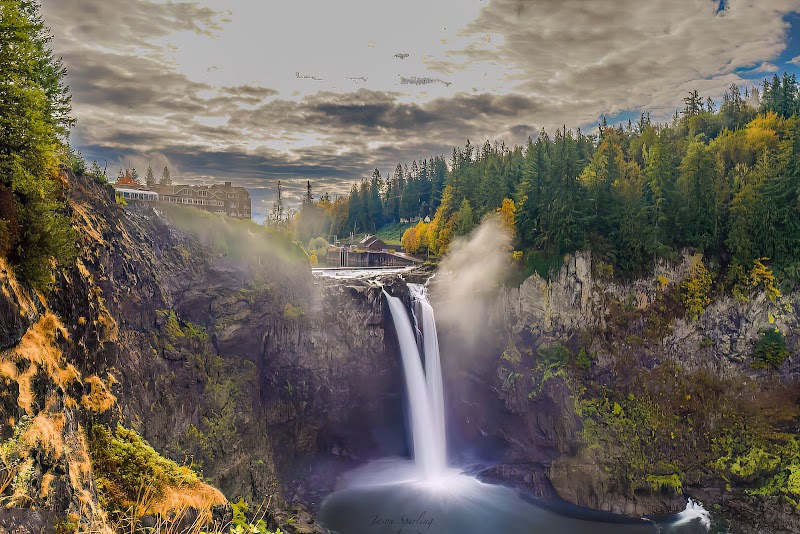
Trailblazing Through Marymoor Park: A Practical Guide to Its Trails and Birds
Explore Marymoor Park’s extensive trail network and vibrant bird population in Redmond, Washington. This practical guide offers hiking insights and birdwatching highlights, empowering adventurers to navigate and appreciate the park’s dynamic natural setting.
Pack Sturdy Footwear
Expect a mix of gravel, dirt, and occasional boardwalk surfaces; hiking shoes with good traction will keep you steady and comfortable.
Bring Binoculars For Birdwatching
Marymoor’s rich birdlife often stays just out of arm’s reach; binoculars enhance detail and deepen your connection with the environment.
Start Early for Best Wildlife Viewing
Bird activity peaks at dawn and early morning, so plan your hike to catch the lively chorus and quiet moments along the trails.
Carry Sufficient Water
Water refill stations are limited, especially during warmer months, so bring enough hydration to sustain your adventure comfortably.
Trailblazing Through Marymoor Park: A Practical Guide to Its Trails and Birds
Marymoor Park in Redmond offers an expansive playground for trail hikers and bird watchers alike, with over 10 miles of interwoven paths threading through forests, wetlands, and open fields. These trails vary from easy, flat routes following the gentle pull of the Sammamish River to slightly more rugged loops skirting dense woodlands, all designed to engage adventurers without overwhelming. The landscape holds a steady pulse — trees lean in, the river dares you onward, and the wind moves through the foliage like a whispered invitation.
Birdlife here thrives fiercely. Under the dense canopy, warblers flit with urgent energy, while open spaces welcome hawks that circle with calculated grace. Early mornings bring the orchestra of songbirds, from chickadees to robins, each call a marker of this living ecosystem. The wetlands at the park’s edge support herons and kingfishers, which perform ballets just beyond reach of the casual observer.
For hikers, the terrain remains approachable: trails have light elevation changes, mostly gentle rises that keep your heart engaged without demanding a summit push. The combination of gravel paths, dirt tracks, and boardwalk sections through marshy areas means sturdy hiking shoes are a must. With well-marked signage, navigation remains straightforward, but carrying a map or GPS can enhance the experience by revealing less-traveled offshoots.
Timing matters here. Visit in early spring to catch migratory birds arriving or late fall when the forest shifts into russet tones. Summer afternoons bring bright sunlight filtering through the leaves, while winter rains sharpen the scent of earth and pine. Hydration is vital—water stations are limited, so pack enough to keep pace with your exertion.
This isn’t a place to rush. It demands respect for its layers: the bird that darts a glance your way, the river urging you to pause, the wind that cools your skin as you climb a knoll. The adventure is about moving through a wilderness that remains proudly itself, a challenge more of patience and attention than raw endurance.
Preparation is simple but effective. Wear moisture-wicking layers, carry binoculars to bridge distance with detail, and bring a camera to seize moments of interaction between trail and wing. Set out early to enjoy quieter paths and prime birdwatching hours. Marymoor Park’s trails and birdlife will reward you with a balance of discovery and calm, a practical wilderness experience in the shadow of urban comfort.
Nearby Trips
All Adventures
Boat Charters
Water Activities
Adventures near Redmond, Washington
Discover the unique and memorable adventures that make Redmond, Washington special.
Frequently Asked Questions
How long are the main trails at Marymoor Park?
The park features about 10 miles of interconnected trails. You can choose loops ranging from 1 to 5 miles, allowing flexibility to fit shorter walks or longer hikes.
Is Marymoor Park dog-friendly on the trails?
Yes. Dogs are welcome but must be kept on leashes. There are designated off-leash areas elsewhere in the park, but trails require leashing to protect wildlife.
What kind of birds can I expect to see?
Expect a variety of species including songbirds like warblers and sparrows, waterfowl near wetlands, and birds of prey such as red-tailed hawks soaring overhead.
Are there guided birdwatching tours available?
Occasionally, local birding groups and the parks department organize guided walks. Check community postings or the Redmond Parks website for schedules.
Is there parking available near trailheads?
Yes, Marymoor Park has multiple parking lots accessible from main entrances. Arriving early is advised on weekends to secure a spot.
Can I access the trails year-round?
The trails remain open throughout the year, but seasonal weather can affect conditions. Winter may bring muddy terrain, and summer heat calls for extra hydration.
Recommended Gear
Hiking Shoes
Solid grip and comfort for varied trail surfaces including gravel and boardwalks.
Binoculars
Essential for spotting and identifying distant bird species.
Water Bottle or Hydration Pack
Necessary to prevent dehydration, especially in warmer months with limited water stations.
Rain Jacket
Protects against the Pacific Northwest’s frequent rain, keeping you dry and comfortable on wet trails.
Local Insights
Hidden Gems
- "The lesser-known Stormwater Pond trail section reveals wetland bird life without the usual crowds."
- "The overlook near the velodrome provides a quiet vantage point of the Sammamish River’s bend."
Wildlife
- "Be on the lookout for beavers busy along the riverbanks and occasional river otters slipping through the currents."
- "Northern flickers and pileated woodpeckers drum their presence in wooded sections."
History
"Marymoor Park sits on lands historically inhabited by the Duwamish people. The park’s open fields were once agricultural land, now thoughtfully restoring native habitats."
